Eye Care in Iran
Iran boasts a host of highly qualified eye care professionals, as well as eye hospitals and eye clinics equipped with the most advanced technologies, aiming to treat a variety of ophthalmic disorders and diseases. Hence, it is needless to say that we offer the best eye care services, at affordable prices, especially for those who seek cost-saving eye care treatments abroad. Among the most common eye care services provided by highly skillful Iranian ophthalmologists is Lasik eye surgery. Lasik eye surgery in Iran is very popular due to many reasons including high success rate, skillful doctors, and also all-inclusive package provided by Alaedin Travel including T-visa, hotel, transfer, sim card, and everything you need as a traveler seeking Lasik eye surgery in Iran.

It is needless to say that Lasik eye surgery cost in Iran is positively reasonable compared to other countries and the quality.
The high success rate of eye treatments in eye care centers in Iran has made us one of the most exceptional and popular eye care destinations for those who are hard to please. Here's a list of most common eye care treatments.
Lasik Eye Surgery in Iran
LASIK, Laser-Assisted In Situ Keratomileusis, is a common refractive surgery used for treatment of common vision problems including nearsightedness (myopia), farsightedness (hyperopia), and astigmatism.
Lasik eye surgery in Iran is very popular. It is also noted that here in Alaedin Travel we provide all-inclusive package including T-visa, hotel, transfer, sim card, and everything you need as a traveler seeking Lasik eye surgery in Iran.
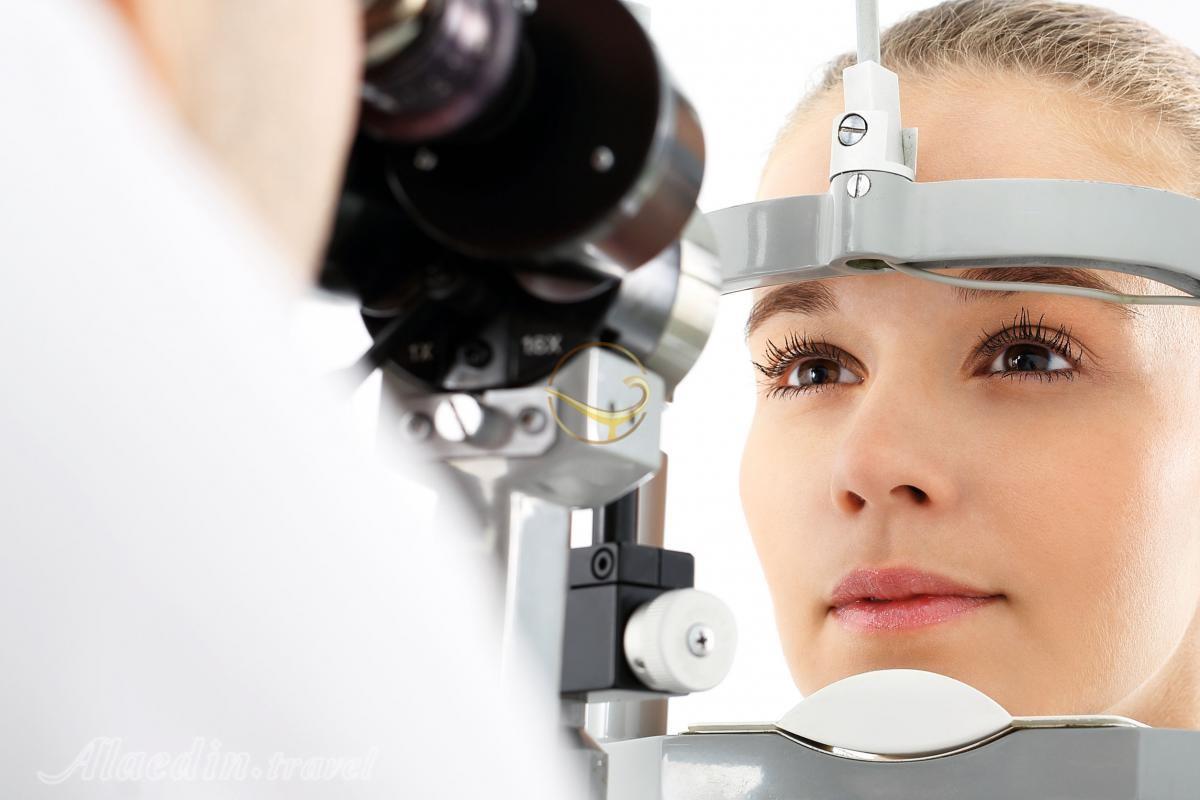
Before the surgery: As contact lenses can change the shape of your cornea, you need to completely stop wearing them for weeks before the surgery, and only wear glasses. Do not wear any eye makeup, cream, or lotions on the day before the surgery and on the day of the surgery. To minimize the risk of infection your doctor may also instruct you to clean your eyelashes in the days leading up to the surgery.
The surgery: To help you relax you may be given medicine. Then using a special instrument your surgeon holds your eyelids open. In order to improve the vision, a special type of cutting laser is used to precisely reshape parts of you cornea.

During the surgery, you need to focus on a point of light, to help you keep your eyes fixed while your cornea is being reshaped. It is normal to smell an odor similar to that of burning hair during the procedure. The treatment is an outpatient procedure that usually takes about 15 minutes per eye. It is noteworthy that the result of the surgery is permanent.
After the surgery: Lasik surgery recovery time is relatively short. During the Lasik recovery time it is normal to experience dry eyes, double vision, blurry vision, halo, and a temporary decrease in tear production after LASIK surgery. The problems usually clear up within a few weeks after the surgery. During the healing process eye drops will be prescribed. Other follow-up appointments are recommended during the first 6 months after the surgery. Avoid wearing makeup and swimming or using hot tubs for a few weeks after the surgery.
It is also noted that apart from LASIK there are some other refractive surgeries including Photorefractive keratectomy (PRK), Radial keratotomy (RK), Astigmatic keratotomy (AK), Automated lamellar keratoplasty (ALK), Laser thermal keratoplasty (LTK), Conductive keratoplasty (CK), Intracorneal rings (Intacs). These procedures aim to treat different levels of vision problems, that is nearsightedness, farsightedness, and astigmatism.
Lasik Surgery cost in Iran
It is needless to say that Lasik eye surgery cost in Iran is positively reasonable compared to other countries and the quality.
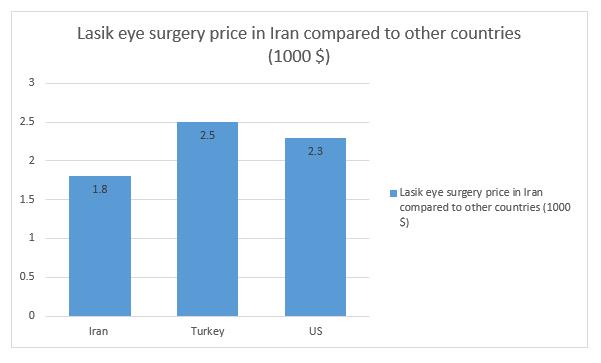
Cataract Surgery in Iran
Cataract, simply put the clouding of the lens inside the eye, is the condition that causes vision loss, and cannot be corrected with glasses.
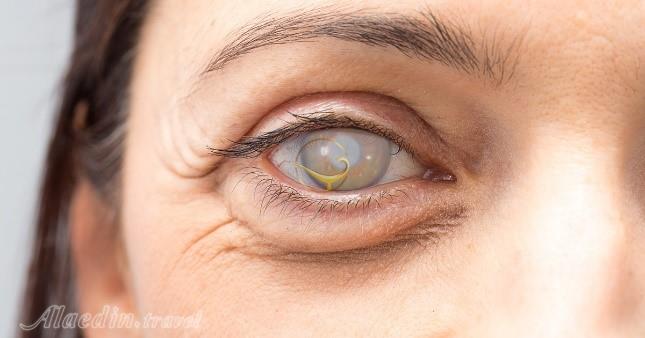
Your surgeon will perform several tests to make sure you have a cataract. These tests include: visual acuity test, lit-lamp examination, and retinal examination.
Removing cataracts is not emergency for some people. However, in people suffering from diabetes it can worsen faster.
Surgery: For cataract treatment your surgeon removes the cloudy lens and replaces it with a clear permanent artificial lens.
Cataract surgery is generally done on an outpatient basis, and is performed under local anesthesia.
After the surgery: Healing process generally takes up to 8 weeks.
If cataract surgery for both eyes are required, your surgeon schedules the second eye surgery, after you have healed from the first one.
It is also noted that the success rate of cataract surgery in Iran is very high. Iranian skillful ophthalmologists perform more than 70,000 successful cataract surgeries each ear. Cataract surgery cost in Iran is highly competitive compared to other countries.
Strabismus Surgery in Iran
As a result of loose or tight eye muscles, alignment of the eyes changes relative to each other.
We proudly say that strabismus surgery in Iran, to be more exact, strabismus in Shiraz, if not the first, is among the top rankings in the world. The success of strabismus surgery in Iran and the unique method our surgeons use has been published in JAAPOS (Journal of American Association for Pediatric Ophthalmology and Strabismus).
Prior to surgery, here are some treatments including glasses, prisms, patching, botulinum toxin injection, or a combination of these treatments.

Surgery: To treat strabismus through surgery, your surgeon weakens, strengthens, or moves the eye muscle to another position to improve alignment.
The procedure takes only a few hours, and for children is performed under general anesthesia, and for adults can be done under general or local anesthesia.
To improve the chance of restoring normal binocular vision, early surgery is recommended for some children.
Before the surgery to assess the alignment of the eyes and determining which muscles need to be moved, your surgeon measures the degree of strabismus.
To reduce bleeding during the surgery, it is highly recommended to stop taking blood thinners and aspirin-containing products.
After the surgery: Children can go back to school after 2 days after the surgery. Adults are not allowed to drive up to one week after the surgery. It is normal to experience double vision within a week after the surgery. You are not allowed to swim for 2 weeks after the surgery.
Corneal Transplant Surgery (keratoplasty) in Iran
Corneal transplant surgery, also known as keratoplasty or corneal grafting, is one of the most common eye surgeries in Iran. The surgery is performed to replace a damaged or diseased cornea with a donated corneal tissue (the graft). We proudly state that the success rate of corneal transplant surgery in Iran is extremely high due to our highly qualified and skillful ophthalmologists.

Cornea is vital to the vision, for protecting the pupils, and for focusing light waves. Therefore, a corneal transplant is crucial in case of:
• cornea scarring because of injury or infection
• corneal ulcers
• keratoconus (bulging out of the cornea)
• swelling of the cornea
• inherited eye diseases
• problems caused by an earlier eye surgery
Surgery: Like any other surgery, you should stop taking aspirin weeks before the surgery to reduce bleeding. To help prevent infection, you will have to use antibiotic drops in your eyes the day before the transplant.
Your surgeon removes all or a part of diseased or damaged cornea, and replaces it with a healthy donated layer of tissue. The donated tissue is from people who chose to donate when they died.
Corneal transplant surgery is generally done as outpatient procedure under local anesthesia, and takes from 30 minutes up to one hour.
After the surgery: It is necessary to wear an eye patch from 1 to 4 days. It is normal to feel sore and hurt for a few days. To bring down inflammation and decrease chance of infection, eye drops will be prescribed. Pain killers may also be prescribed. You may also need to adjust your glasses or contact lenses. Total recovery can take up to a year, but you can resume your work within a few weeks after surgery. For the first 2 weeks heavy exercise is prohibited.
It is also noteworthy that the donated tissue lasts a lifetime.
Glaucoma treatment in Iran
Glaucoma is damage to the optic nerve, and can cause loss of vision which is irreversible.
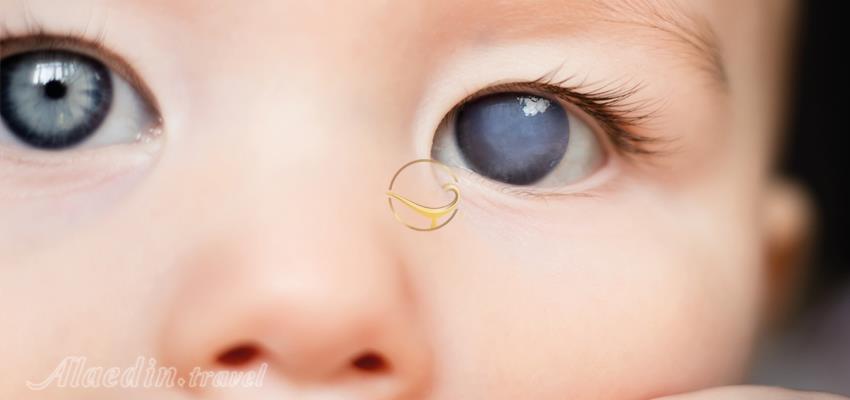
People who are at risk of Glaucoma are as follows:
• Certain races like African-American, Irish, Russian, Japanese, Hispanic, Inuit, or Scandinavian descent
• People over 40
• People with family background of the disease
• People with poor vision
• Diabetic patients
• People who had a trauma to the eye(s)
There are several treatments for glaucoma including the following:
• Medicines: The most common early treatments for glaucoma are pills and eye drops. The prescribed eye drops and pill can lower eye pressure and cause the eyes make less fluid, respectively.
• Laser trabeculoplasty: This step may be suggested by your doctor at any time to help fluid drain out of the eye. Before laser treatment at doctor’s office or clinic numbing drops will be applied to your eyes. The laser makes several burns that stretch the drainage holes to allow fluid to drain better. If both eyes need Laser treatment, the treatment will be scheduled several days to several weeks apart.
• Surgery: Incisional surgery, also called filtering surgery, is recommended after medicine and laser treatment have failed to control pressure. In this method, your surgeon makes small injections around the eyes to numb them, and then creates a drainage hole using a small surgical tool. Incisional surgery is an outpatient surgery, and is usually done under local anesthesia.
After the surgery: For at least 2 weeks after the surgery you should keep water out of the eye. You should also avoid reading, driving, bending, and heavy lifting. It is normal to experience increased eye tearing, redness, and irritation after the surgery. You may also need to change your contact lenses or glasses. To avoid infection special care is needed.
The type of the treatment depends on the type and severity of your glaucoma, and also on general health of your eye. It should be noted that the surgery cannot reverse vision loss.
It is noteworthy that immediate treatment for early-stage glaucoma can delay progression of the disease.
Diabetic Retinopathy Treatment in Iran
As diabetes progresses, chronic high blood sugar causes some changes in the tiny blood vessels in the retina that make them leak and bleed.
Diabetic retinopathy is diabetes-related damage to the light-sensitive retina in the back of the eye.
Based on research, laser surgery for macular edema reduces the occurrence of vision loss to 15% over a 3-year period.
Managing your diabetes
As controlling your diabetes in the early stages can help prevent vision problem developing, the most important part of the treatment is to keep your diabetes under control.
Keeping your diabetes under control in more advanced stages can help stop the condition getting worse, as well.
Treatment
As there’s a risk to your vision when diabetic retinopathy reaches an advanced stage, specific treatment is required.
It should be noted that at all stages, managing your diabetic is essential.
The main treatments for diabetic retinopathy that is threatening your sight are: laser treatment, eye injections, and eye surgery.
Laser treatment aims to treat the growth of new blood vessels at the back of the eye (retina).
In this method to numb your eyes local anesthetic drops will be given to you. To widen your pupils you will also be given special contact lenses and eye drops.
The treatment involves shining a laser into your eyes, and normally takes up to 40 minutes.
It is normal to experience blurred vision, increased sensitivity to light, and mild aching after the treatment. You will need to wear sunglasses, and take painkillers.
It should be noted that the treatment stops your vision getting any worse, although it won’t usually improve your sight.
Eye injections aims to treat severe maculopathy that is threatening your sight.
In this method, to prevent new blood vessels forming at the back of the eyes, a special medicine will be directly injected into your eyes.
For this treatment, the skin around the eyes will be cleaned and then covered. To numb your eyes, you will be given anesthetic drops. Then your surgeon carefully guides a very fine needle into your eyeball. It is noted that the injections are usually given once a month, and they will be stopped or given less once your vision starts to stabilize.
It is normal to experience irritation, bleeding inside the eye, watery or dry or itchy eye, and feeling of having something in your eye.
Eye surgery aims to remove blood or scar tissue from the eye in cases of advanced retinopathy that laser treatment is not possible.
This type of treatment, also known as vitreoretinal surgery, may be needed if:
• A large amount of blood has collected in your eye
• There's extensive scar tissue that's likely to cause, or has already caused, retinal detachment.
Vitreoretinal surgery is generally performed under local anesthesia and sedation. Your surgeon will make tiny incisions in your eyes before removing any scar tissue, removing some of the vitreous humour, and using a laser to prevent a further deterioration in your vision.
It is normal to experience blurred vision after the operation. You may need to wear a patch over your eyes for a few days after the surgery. It is also noted that activities like reading and watching television are not allowed since they can tire your eyes easily.
Eye lid surgery in Iran (Blepharoplasty)
Eyes are considered as the most significant elements on facial beauty.

However, some factors including aging and heredity make the eyes look old and not so attractive. As a result, droopy eyelids not also make you look older, but they also impair vision.
Fortunately, thousands of people choose eye lid surgery, or blepharoplasty, to improve appearance and correct the possible problems droopy eyelids can cause.
Eyelid surgery mainly aims to treat the following:
• Puffiness and bags under the eyes
• Bags under eyes
• Drooping lower eyelids
• Excess skin and wrinkles of the lower eyelid
• Deformities of the eyelids

As blepharoplasty is the fourth most frequently done surgery in Iran there is no doubt that our highly skillful board-certified plastic surgeons provide you with desirable results.
It might be noteworthy that eye lid surgery does not change the form of the eyes. It does, though, make the eyes look more open, and it tightens droopy and loose skin around the eyes.
Before the surgery: In order to reduce excess bleeding during the surgery, it is recommended to stop taking aspirin before the surgery.
The surgery: Eyelid surgery is generally performed under general anesthesia. Considering your condition, the surgeon decides to carry out the surgery on upper lids, lower lids, or both.
In order to determine where excess skin needs to be removed, your surgeon then makes precise markings on your skin. Then he will make tiny delicate incisions in the upper and / or lower lids, leaving no visible scars after the surgery.
To achieve the most desirable result it is also recommended to combine the procedure with a brow lift and / or a face lift, too.
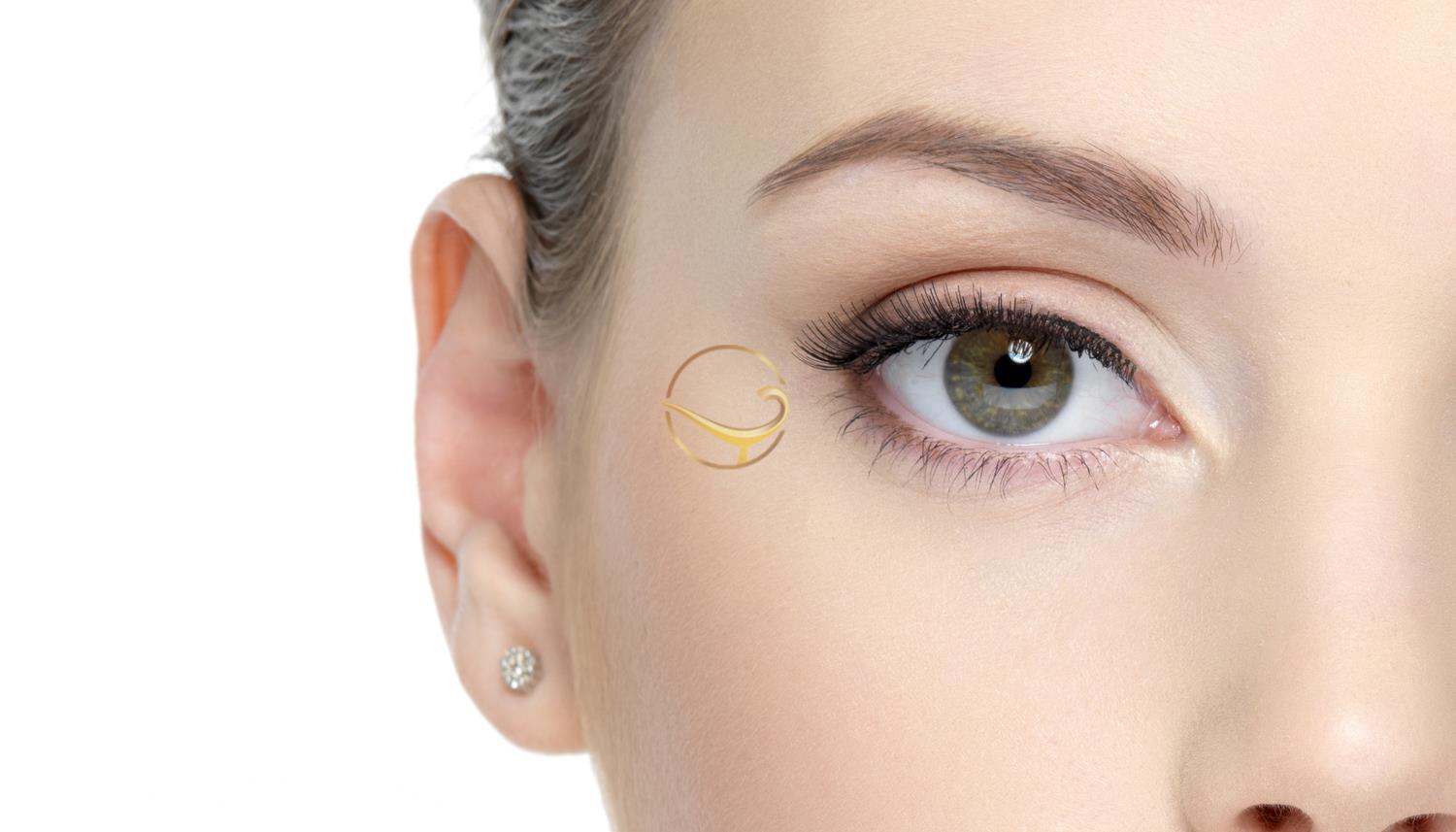
After the surgery: Experiencing red and dry eyes, and also mild swelling and bruise is quite normal. Prescribing eye drops, and also applying cold compress could be helpful, respectively.
To help reduce the risk of infection and help reducing the swelling, it is also necessary to avoid wearing makeup and contact lenses at least one week after the surgery.
It is also noteworthy that the healing process is short and less than 2 weeks.
It should be noted that many people choose to have eyelid surgery in Iran because of highly skillful surgeons and also the fact that eyelid surgery cost in Iran is much lower compared to other countries.
